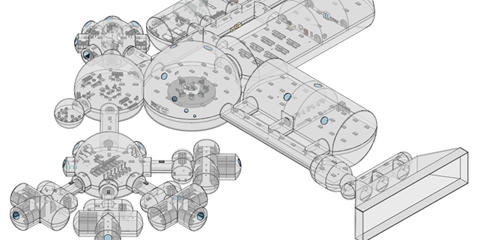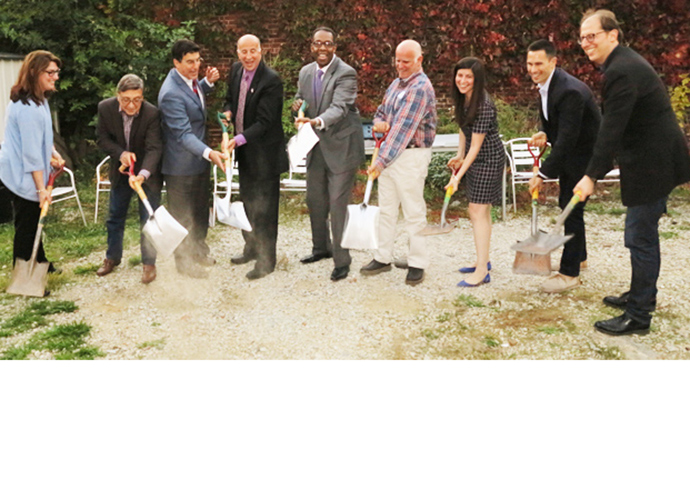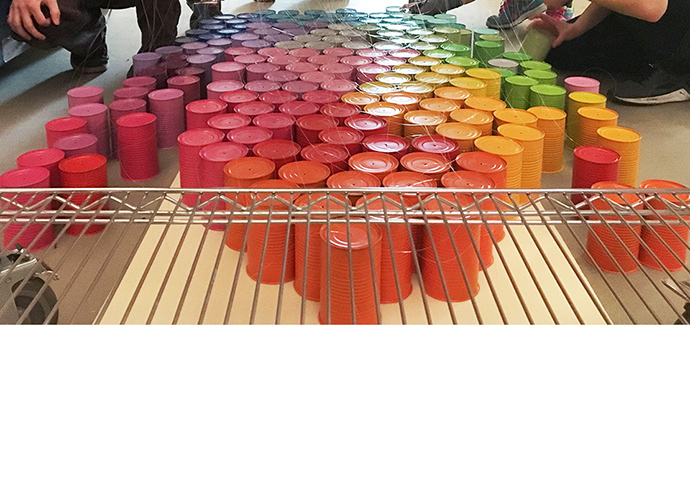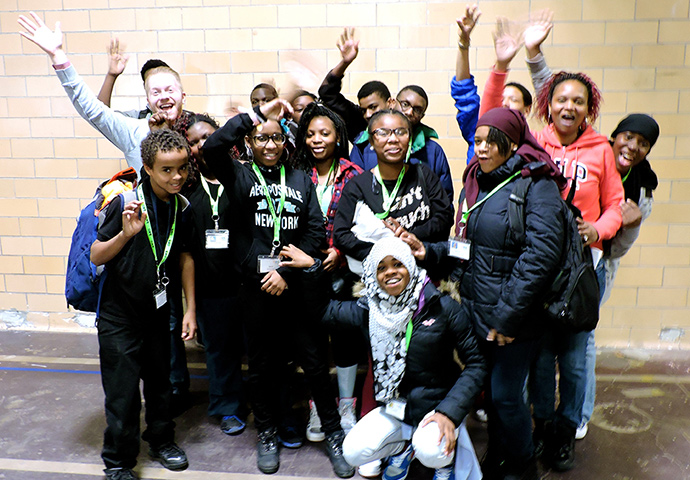Report from the Studio: Developing Virtual Reality for the Classroom
As part of KieranTimberlake's commitment to dedicate 1% of its time to community service and engagement, the Community Involvement group collaborates with nonprofit organizations on pro-bono projects of various scales. In this Report from the Studio, Community Involvement members Fátima Olivieri and Efrie Friedlander discuss their work on Mars City.
As architects we know firsthand the urgency of introducing young students to STEM (science, technology, engineering, and math) disciplines in order to ensure technical skills for future generations. Since 2014, our team of architects and researchers has been partnering with the National Institute of Building Sciences (NIBS), NASA, and the Total Learning Research Institute (TLRI) to develop a virtual base on the planet Mars. This Mars base, also known as the Mars City Facility Ops Challenge or, more simply, Mars City, places high school students in a virtual reality simulation in which they are facility managers in charge of maintaining the base. As members of the Mars City Operations Teams, participating students assign virtual work orders and prioritize tasks ranging from routine maintenance, such as regularly cleaning the city's photovoltaic panels, to life-threatening emergencies, like an atmospheric leak in a habitation module. Designed to teach students valuable troubleshooting, time management, and teamwork skills, these simulations are meant to be integrated into participating high schools' math and science curricula with the goal of exciting students about potential career paths in the building sciences.
Since its inception, our team has been evolving the design of this educational tool in order to create a more engaging and realistic virtual environment in which Mars City work scenarios take place. Alongside members from Gilbane Construction Group and Alderson Engineering, our team used initial drawings provided by TLRI to generate a digital building information model, or BIM model. This model then became the framework for the current virtual reality base. While our primary goal is to create the most realistic simulation possible, we have also been leveraging our knowledge of virtual reality platforms to create a Mars City Facility Ops Challenge that operates much like a gaming system. Through the virtual reality environment, students can select different scenarios and perform their work orders while being fully immersed in the base.
While Mars City isn't yet available to schools and students, it was available for demonstration at the Autodesk University conference in Las Vegas this past November and at the NIBS Building Innovation Conference in early January. The audience's enthusiasm during these demonstrations is further proof that more and more people are beginning to see the value of creating interactive learning environments to better engage not just students, but also building professionals trying to stay on the cutting edge of their field.








